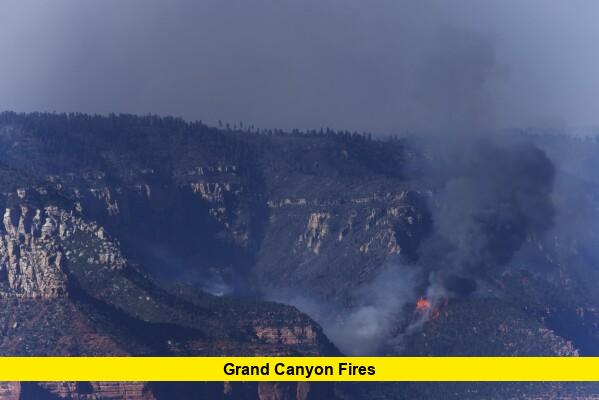Grand Canyon fires have escalated rapidly, as the North Rim faces its most significant wildfire challenge in years. On July 30, 2025, officials confirmed the Dragon Bravo Fire has expanded to over 71,000 acres, fueled by historically dry conditions and relentless winds. Containment has plummeted from a positive 26% late last week to just 9%—and firefighters warn that further spread is likely in the days ahead.
Table of Contents
Wildfire Growth and Dwindling Containment
The Dragon Bravo Fire, ignited by lightning on July 4, has nearly tripled in size within several days. As of Tuesday, more than 1,000 personnel are engaged in defensive operations along the North Rim. Despite these numbers, strong winds and parched terrain have stymied progress. Fire activity remains high both day and night, leaving crews with minimal rest and few opportunities to expand controlled perimeters.
Officials attribute the current crisis to months of insufficient rain. Monsoon moisture, usually a mid-summer salvation, has not materialized. “These unprecedented dry air masses are merely the beginning,” said fire spokesperson Lisa Jennings. “We have also been experiencing a dry season without the monsoon moisture that typically arrives in early July”.
Closures and Destruction
- North Rim completely closed: Due to fire damage and safety risks, the North Rim will remain closed for the entire 2025 season.
- Historic structures lost: Flames destroyed the iconic Grand Canyon Lodge—the only guest lodge on the North Rim—and as many as 70-80 additional buildings, including historic cabins and administrative facilities.
- Key trails shuttered: Closures extend to the North Kaibab Trail and popular inner canyon destinations like Phantom Ranch and Bright Angel Trail below Havasupai Gardens.
- Visitor impact: The South Rim, the park’s main tourist area, remains open and unaffected, though visitors should remain vigilant about air quality and weather warnings.
Challenges Facing Firefighters
Fire teams are executing a full suppression strategy; however, the region’s signature dense pine forests, low humidity, and steep canyon terrain complicate efforts. Several nights delivered little moisture recovery, allowing fire activity to remain high even after sunset. Additional threats like chlorine gas leaks from a damaged water treatment facility have forced evacuations of both firefighters and visitors in riskier inner-canyon zones.
The blaze is now so extensive it covers an area larger than Washington, D.C. Officials urge tourists and locals to heed safety warnings, especially as extreme heat and poor air quality continue across the region.
What’s Next for the Grand Canyon?
While no new evacuations are planned at this stage, the fire’s northeast progression through wilderness areas means crews remain on high alert. Forecasters are hopeful that forecasted rainfall could aid containment efforts by week’s end, but with persistent heat and wind, rapid changes remain possible.
Park officials, state lawmakers, and the public now look to upcoming independent reviews of wildfire management, as Arizona’s leadership calls for lessons to prevent future devastation. For visitors: stringent closures remain, and anyone traveling to affected zones should monitor real-time alerts.
As the grand canyon fires continue to test both the land and its stewards, the loss of North Rim icons and the relentless challenge for containment serve as a somber reminder of nature’s power. Have you visited the Grand Canyon during fire season? Share your experiences or let us know how you’re staying updated in the comments.
